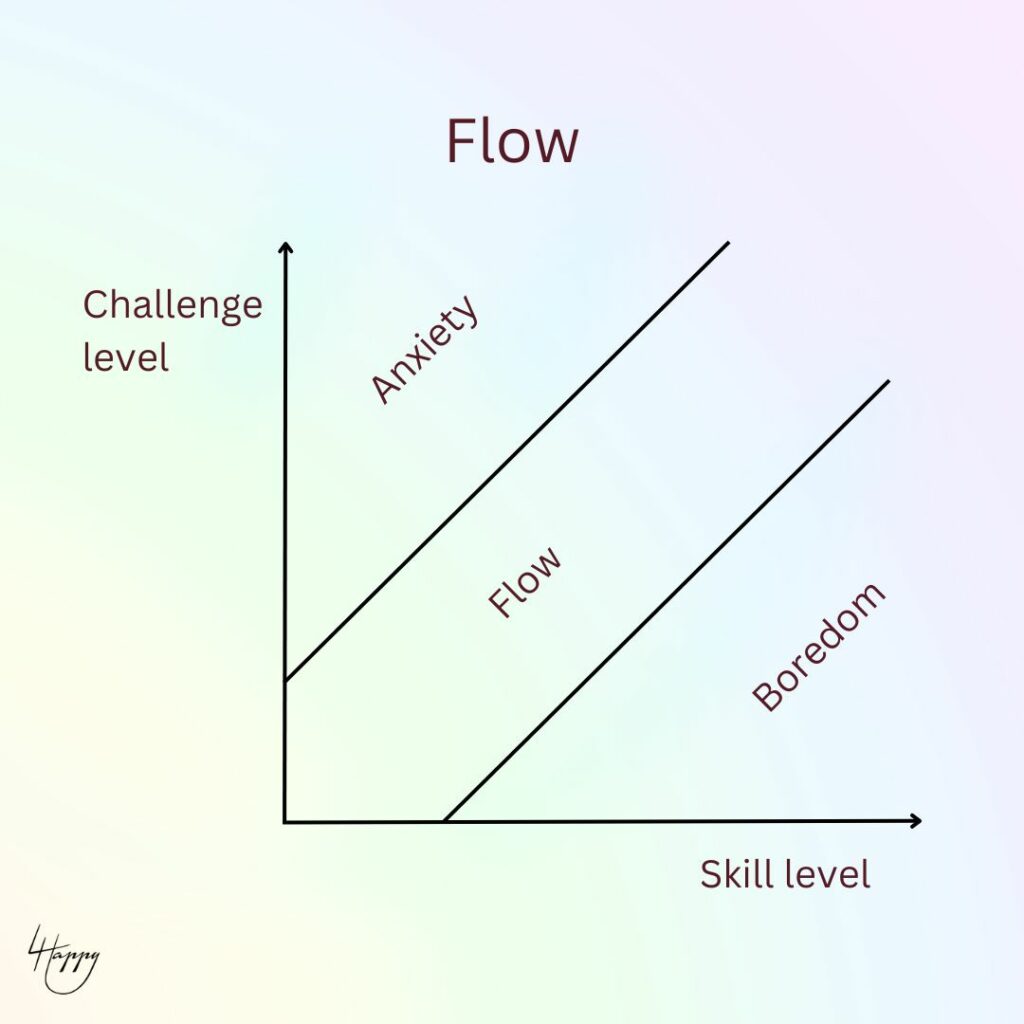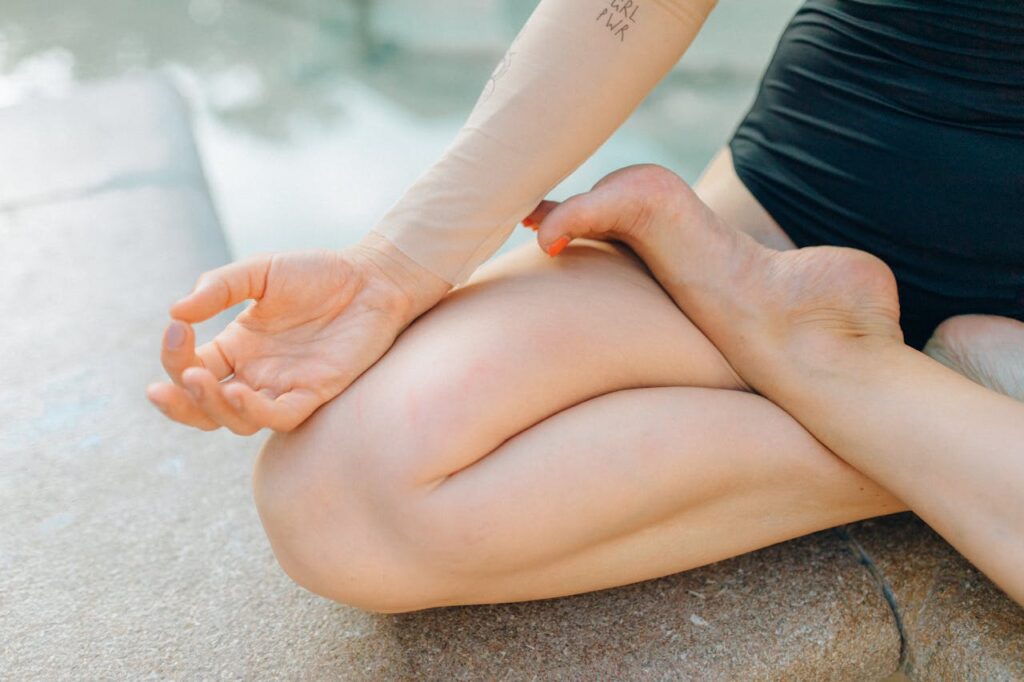The State of Flow in Psychology and Its Role in Well-being
In the field of positive psychology, the concept of flow has gained immense popularity for its profound impact on well-being and personal fulfillment. Flow in psychology refers to a mental state where one becomes completely absorbed in an activity, feeling both challenged and capable, which leads to a sense of deep enjoyment and focus. Coined by psychologist Mihaly Csikszentmihalyi, this concept highlights how engaging fully in activity can lead to happiness, creativity, and even enhanced productivity.
Whether it’s painting, playing sports, writing, or even working, achieving flow is linked to increased happiness and satisfaction. In this post, we’ll explore the psychology behind flow, the link between flow and happiness, and actionable steps to help you experience flow in your daily life.

Understanding Flow: What is Flow in Psychology?
What is flow state in psychology? Well, flow in psychology is often described as being “in the zone,” where time seems to disappear, and the individual feels completely immersed in their activity. Mihaly Csikszentmihalyi, a renowned positive psychologist, defined the flow state in positive psychology as a mental state achieved when one’s skills are perfectly matched with the challenges they face, creating a delicate balance between skill level and task difficulty. When in flow, individuals lose self-consciousness, become highly focused, and experience an intrinsic reward from the activity itself.
This intense state of engagement is much more than just enjoyment—it’s about deep focus and accomplishment. Many people report feeling at their peak performance during flow states, making it an essential component of engagement and positive psychology.
Csikszentmihalyi Flow Theory: The Science Behind Flow in Psychology
Mihaly Csikszentmihalyi’s flow theory provides the framework for understanding how flow works and why it’s so impactful. According to his research, flow occurs when individuals face tasks that require skill and focus, which leads to an immersive experience. Csikszentmihalyi noted that flow is not a passive state but a highly active one, where individuals push themselves to their limits to achieve something meaningful.
This theory has influenced various fields, from education to corporate training, where creating conditions for flow has been shown to improve learning, performance, and job satisfaction. By following Csikszentmihalyi’s principles, anyone can cultivate flow, leading to a more fulfilling, happier life.

Csikszentmihalyi’s 8 Traits of Flow
Csikszentmihalyi identified eight defining characteristics that encapsulate the state of flow. These traits help us recognize when we’re in flow and provide insight into how to foster this deeply engaging mental state:
1. Intense Focus
In a flow state, attention is fully absorbed by the task, with no room for distractions. This complete concentration enables individuals to immerse themselves in the activity, tuning out the outside world.
2. Clear Objectives and Immediate Feedback
When experiencing flow, people have a strong sense of their goals, knowing exactly what they aim to achieve. Additionally, there is immediate feedback on progress, allowing for quick adjustments and a continuous sense of advancement.
3. Altered Perception of Time
Time feels distorted in a flow state—it may seem to pass quickly or slow down significantly. This transformation of time can make hours feel like minutes or vice versa, depending on the nature of the task.
4. Intrinsic Reward
The activity is enjoyable for its own sake, bringing satisfaction and fulfillment without the need for external rewards. This intrinsic motivation is one of the defining aspects of the flow experience.

5. Effortlessness
Although the task might be challenging, performing it feels natural and fluid. There’s a sense of ease, where the effort involved seems to come naturally, despite any complexities.
6. Balance Between Challenge and Skill
Flow requires harmony between the task’s demands and the individual’s skill level. The activity is challenging enough to keep a person interested but not so overwhelming as to induce anxiety. This balance keeps the person engaged and stimulated.
7. Unity of Action and Awareness
Self-consciousness fades as actions and awareness merge. Instead of self-reflecting, individuals are fully engaged in the task, leading to a seamless interaction between their mind and the activity.
8. Sense of Control
Despite the intensity of focus, there’s a feeling of being in control of the activity. This sense of mastery and agency enhances the person’s confidence in handling challenges within the task.
By understanding and recognizing these eight traits, we can better identify activities that bring us into flow. Pursuing flow-inducing activities can significantly enrich our lives, enhancing engagement, satisfaction, and overall well-being.

The Connection Between Flow and Happiness
Flow and happiness are often linked because flow involves doing activities that are intrinsically rewarding. Flow for happiness is about finding joy in the process, not just the outcome. People who regularly experience flow tend to report higher life satisfaction and overall well-being. This state is particularly important in achieving long-term happiness as it shifts the focus from external achievements to internal fulfillment. As such, regularly enjoying the state of flow is a powerful way how to improve well-being.
Studies in positive psychology show that individuals who experience flow regularly are more resilient, optimistic, and satisfied with their lives. By prioritizing activities that induce flow, you’re investing in a sustainable path to well-being.
The Role of Flow: Engagement and Positive Psychology
Engagement is one of the five pillars of well-being in the PERMA model of well-being (Positive Emotion, Engagement, Relationships, Meaning, Accomplishment) developed by Martin Seligman. Engagement and positive psychology are tightly connected, with flow being a key factor in achieving true engagement. When we engage deeply in activities we love and find meaningful, we enter a state of flow, which amplifies our sense of accomplishment and fulfillment.
This model suggests that the more engaged we are in meaningful activities, the happier and more satisfied we become. Thus, flow is not just a fleeting moment of joy; it’s a significant contributor to a fulfilling and purposeful life.

Benefits of Flow for Happiness and Well-being
Achieving flow has substantial benefits for both mental health and overall well-being. Studies have shown that flow experiences are directly linked to greater life satisfaction, happiness, and a sense of purpose. Engaging in activities that allow you to enter a flow state can help mitigate stress, enhance resilience, and foster a sense of accomplishment. Here are some specific benefits:
- Enhanced Focus and Productivity: When in flow, distractions seem to disappear. This leads to a higher level of productivity and focus on the task at hand.
- Reduced Stress: Engaging in flow activities can reduce cortisol levels, contributing to a calmer, more balanced state of mind.
- Increased Happiness: By engaging in activities that bring us joy and satisfaction, we are more likely to experience moments of happiness and contentment.
- Personal Growth: Flow pushes individuals to improve their skills and overcome challenges, which contributes to personal development and self-confidence.
How to Enter Flow State
While finding flow might seem elusive, there are practical ways to cultivate this state. Here are some tips for entering flow:
- Set Clear Goals: Having specific objectives can help you stay focused and committed to the activity. For example, if you’re working on a project, define what you aim to accomplish in that session.
- Match Skill with Challenge: Choose tasks that are challenging but not overwhelming. When activities are too easy, you might feel bored; if they’re too difficult, you may feel anxious.
- Eliminate Distractions: Flow requires deep concentration, so minimize interruptions. Turn off your phone, close unnecessary tabs, and create an environment conducive to focus.
- Practice Mindfulness and Presence: Mindfulness helps bring you into the present moment, which is essential for flow. Practicing mindfulness before starting an activity can help you focus and get “in the zone.”

How to Cultivate Flow in Daily Life
To incorporate more flow into your life, start by identifying activities that naturally capture your interest and attention. Here are some ideas:
Practice a Skill
Engage regularly in an activity you enjoy, like playing a musical instrument, practicing a sport, or working on a craft. Through consistent practice, you can reach deeper levels of engagement and improve your ability to enter a flow state.
Seek Novelty
Taking on new challenges and exploring unfamiliar activities stimulates the brain, making it easier to experience flow. Try learning a new skill or taking on a project at work that pushes your limits. These fresh challenges keep you engaged and make flow more attainable.
Set Aside Dedicated Time
Flow requires uninterrupted focus. Carve out specific blocks of time for activities that promote flow, like writing, painting, or other creative work. This dedicated time lets you fully immerse yourself without distractions.
Reflect on Past Flow Experiences
Think about moments when you felt fully absorbed and engaged in an activity. Reflect on what you were doing, the environment, and the factors that contributed to that experience. This reflection helps you recognize which activities are most likely to induce flow, so you can pursue them more deliberately.
Practice Mindfulness
Flow and mindfulness are deeply connected, as both require presence and focused attention. Incorporate mindfulness practices, like meditation or deep breathing, to sharpen your focus and increase your ability to immerse yourself in the present moment, which can make achieving flow easier.
By implementing these strategies, you can increase your chances of experiencing flow and enhance your well-being. This state of deep engagement not only boosts happiness but also provides a sense of accomplishment and fulfillment.

Final Thoughts on Flow in Psychology and Well-being
Incorporating more flow experiences into your life is one of the most effective ways to enhance well-being and find lasting happiness. By understanding flow in psychology and its benefits, you can start to create a life that feels fulfilling and balanced. The journey to finding flow may take time, but with deliberate practice and a focus on meaningful activities, it can become a regular part of your life.
If you’re interested in exploring ways to experience more flow or enhance your happiness, consider positive psychology coaching. We will help you identify and engage with your strengths, passions, and values to create a life you love – a life full of joy and flow.
Resources
The information in this article is grounded in scientific research. If you’re interested in specific studies, feel free to reach out to us.
For daily doses of joy, positivity, inspiration, and motivation, be sure to follow us on Instagram.
Za naše bralce v Sloveniji
Če vas zanima več o psihoterapiji in iskanju trajne sreče, preberite naslednje članke: Psihoterapija Obala, 5 ključev do trajne sreče in notranjega miru, Najboljši psihoterapevti v Sloveniji: Kako se hitro spopasti s stresom, Psiholog v Kopru: Kako odpraviti težave s psihoterapijo in RTT terapijo, in Psihoterapija Online: Prednosti in učinkovitost terapije na daljavo.


